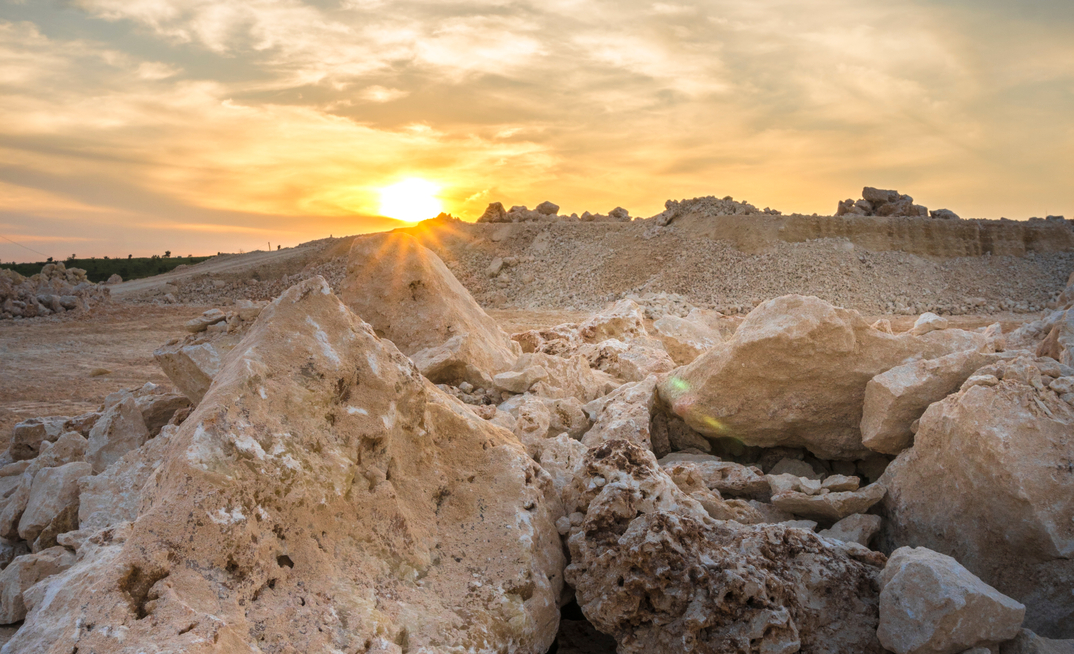This is bad news for the mining sector and the world at large, given that the raw materials produced by miners are the building blocks of our modern society.
As custodians of national geological data, governments - or more specifically, mining ministries - are in a unique position to help improve the odds of a major discovery. Indeed, the governments of tier-one mining jurisdictions already do that.
For example, the Australian government recently launched an online portal hosting several terrabytes of integrated data from historic and recent geophysical surveys, geochemical sampling, hydrological mapping and stratigraphic drilling. The data is openly available to explorers, researchers and the community.
Similarly, in December 2021, the Saudi Arabian Ministry of Industry and Mineral Resources and the Saudi Geological Survey together launched the National Geological Database (NGD). The purpose of the database is to provide reliable, secure and accurate information to the public and private sectors, with the aim of assisting in the development of the Saudi mining sector.
The NGD includes recently compiled data from geophysical surveys over an area spanning more than 700,000km2 , as well as land geochemical surveys. It also includes digitised versions of historical data stretching back to prospecting efforts that began around the time of the unification of Saudi Arabia in the early 1930s. This includes data from fieldwork conducted in the 1950s and 1960s by the French Geological Survey (BRGM) and the US Geological Survey, which saw Saudi Arabia become one of the first countries in the world to have its geological data completely mapped by high-altitude aerial photography.
At the same time, a major Regional Geological Survey Program is now under way in Saudi Arabia, and will conduct geophysical and geochemical surveys and create detailed mapping of nearly 700,000 square kilometres of the Arabian Shield.
Mining has historically taken a back seat to the oil and gas sector in Saudi Arabia. However, all that is about to change, thanks to Crown Prince Mohammed bin Salman's Vision 2030, which aims to create a thriving mining and metals industry that leverages the Kingdom's rich mineral endowment - including the highly prospective Arabian Shield in western Saudi Arabia.
The National Geological Database aims to support the Kingdom's strategy and attract investment in its mining sector, by making geological, geochemical and geophysical data freely available to investors.
It includes:
- More than 6,800 technical geological reports for historical geological surveys and mineral exploration programs;
- Data on 5,560 mineral deposits documented within the National Geological Database, with detailed geological data representing each site.
- Regional geological maps ranging from scales of 1:250,000 to 1:1,000,000 for the Arabian Shield region, which spans the western third of the Kingdom, and 1:250,000 to 1:2,000,000 for the sedimentary cover region spanning the remaining two-thirds of the country;
- Regional aerial geophysical and magnetic surveys of the Arabian Shield and adjacent parts of the sedimentary cover region;
- Regional geochemical surveys of more than 25,000 surface and subsurface samples collected from drilling sites, wells and exploratory trenches at mineralisation sites, as well as data of geochemical analyses of surface samples collected from 12 geological squares at a scale of 1:250,000;
- Chemical analyses and test values from more than 150,000 samples from mineral exploration and water wells throughout the Kingdom as well as more than 25,000 surface samples collected from regional geochemical program and mineral exploration sites.
- Database of geological exploration licences and mineral exploitation licences;
- Database of promising sites of mineral prospectivity throughout the country;
- Database of locations of water wells, dams, weather and rain-monitoring stations;
- Specialised earth science information services;
All the digitised information, processed satellite images and spatially referenced and scanned images of geological, topographical maps, and remote sensing data comes to approximately 9 terabytes worth of data.
The National Geological Database has received around 30,000 visitors since its launch. Investors and researchers have submitted more than 3,300 electronic requests and downloaded 15,500 data packages through the portal. Broken down further, more than 9,500 data packages have been downloaded by visitors from countries in Asia, 3,000 from Europe, more than 1,500 from Australia, North and South America, and more than 1,200 from Africa.
Investments in making data available will provide investors and miners with the information they need to confidently plan, make better-informed decisions and invest in new explorations and other mining operations.
The availability of accurate data for the Arabian Shield and other promising mining areas will boost and accelerate exploration projects in these areas and provide the minerals the world desperately needs as it moves to clean energy.
ABOUT THIS COMPANY
Saudi Ministry of Industry and Mineral Resources
HEAD OFFICE:
- Omar Ibn Al Khattab Rd, Al Sina'iyah, Riyadh 12845, Saudi Arabia
- Website: www.mim.gov.sa/mim/index-ltr.html
- Email: info@mim.gov.sa



























